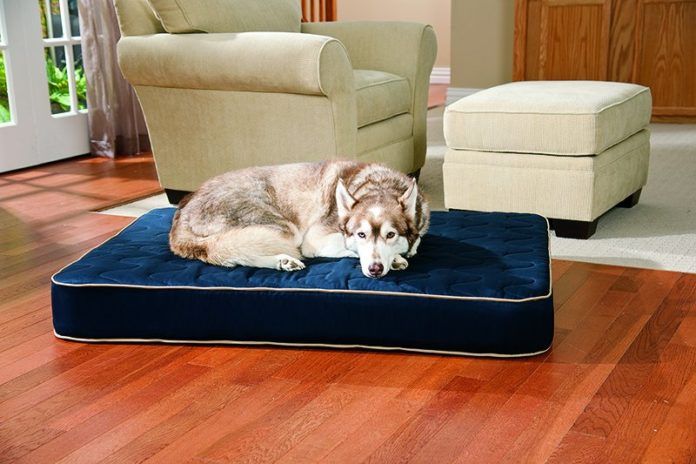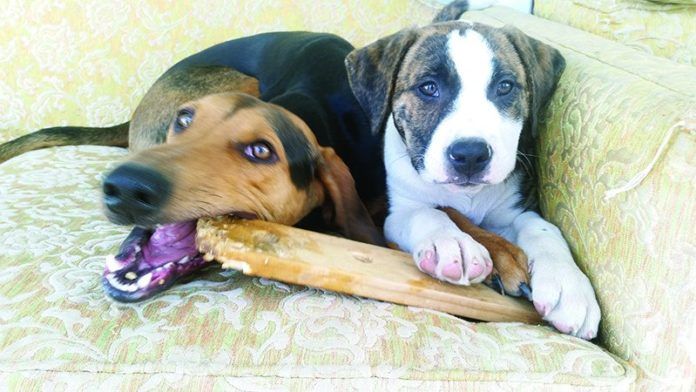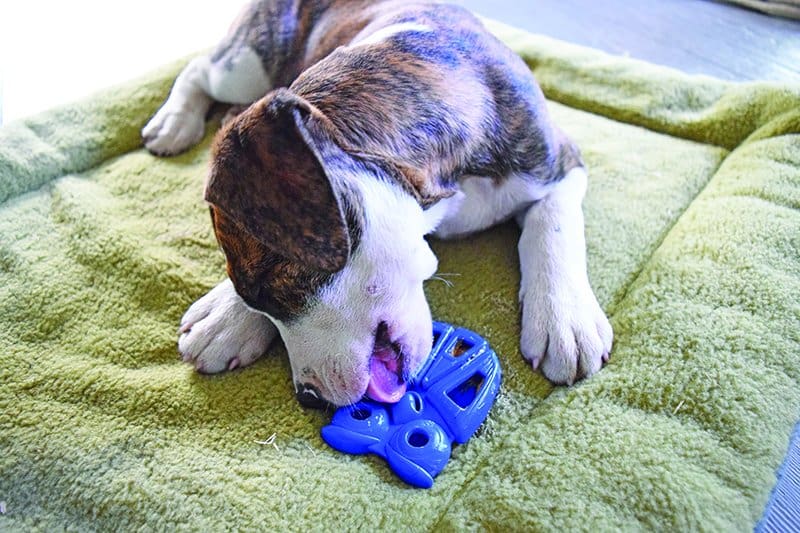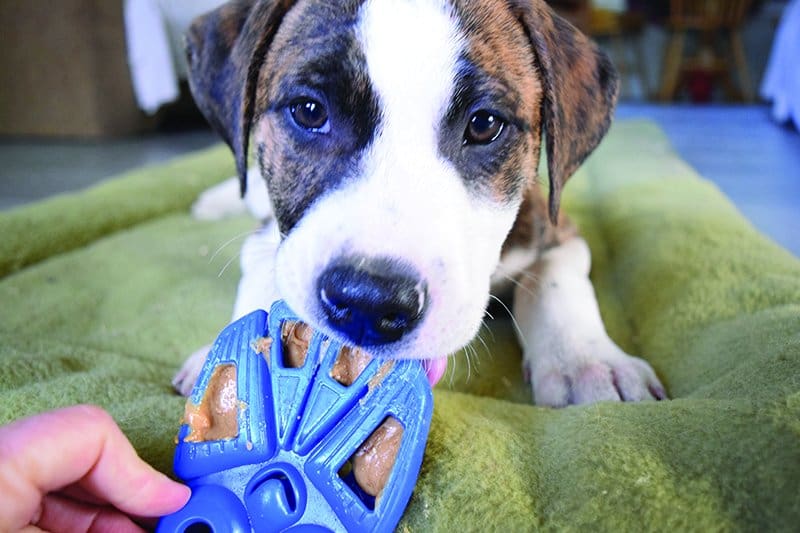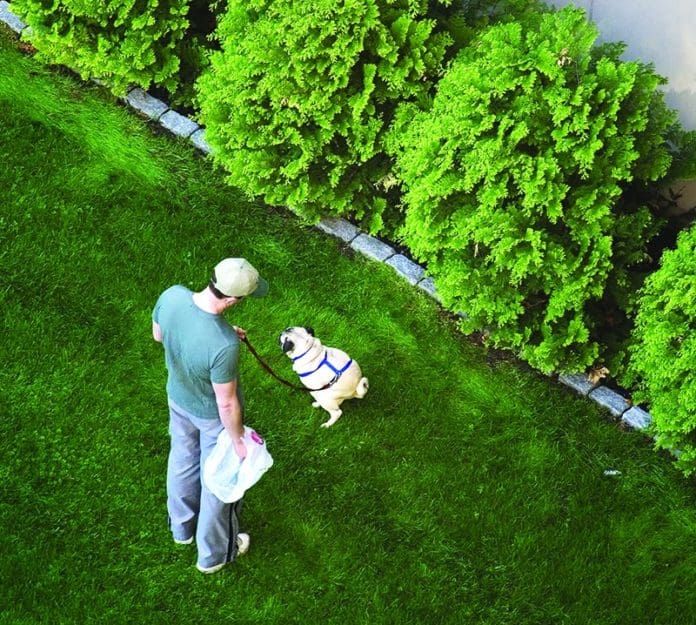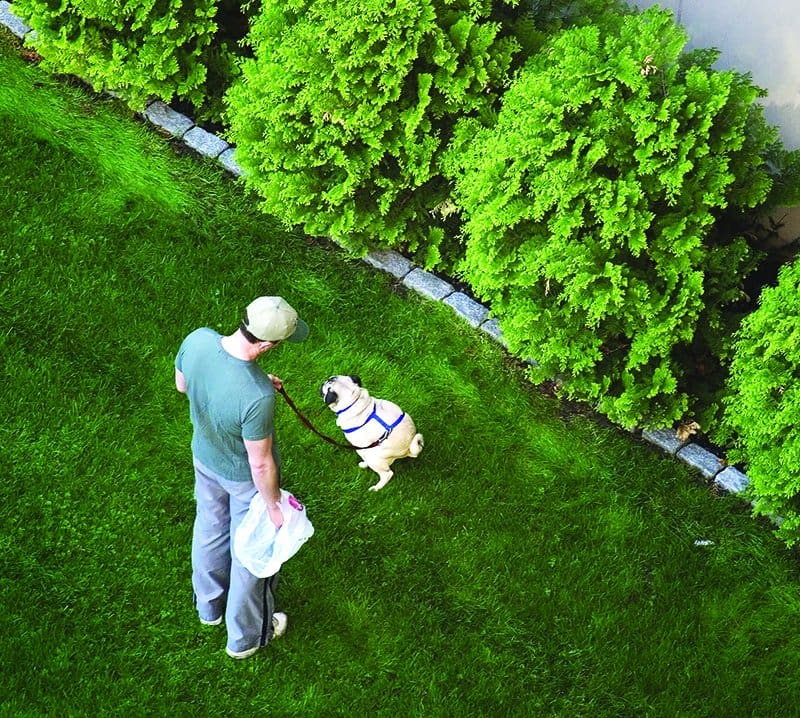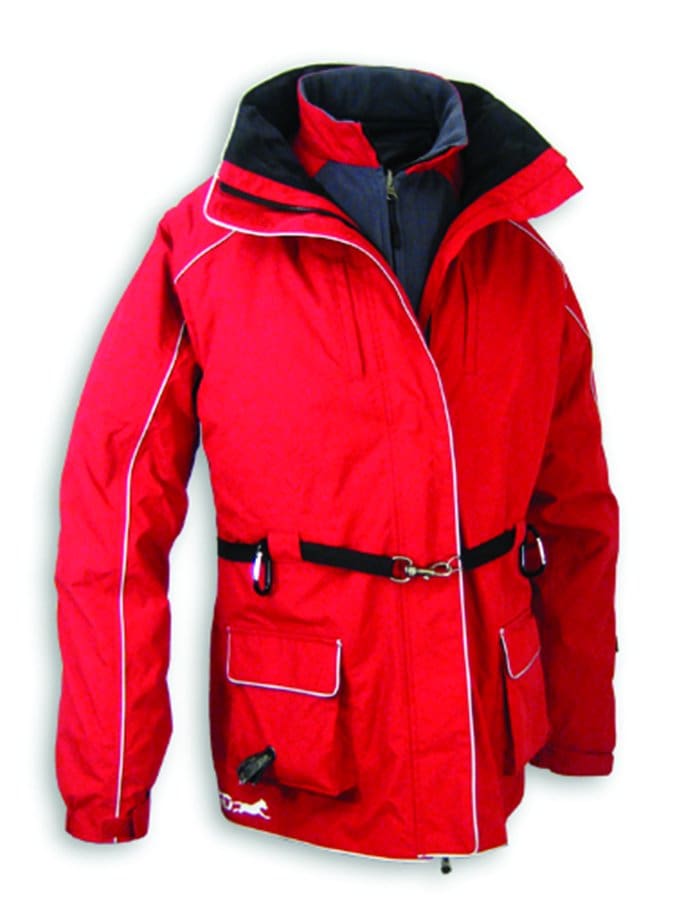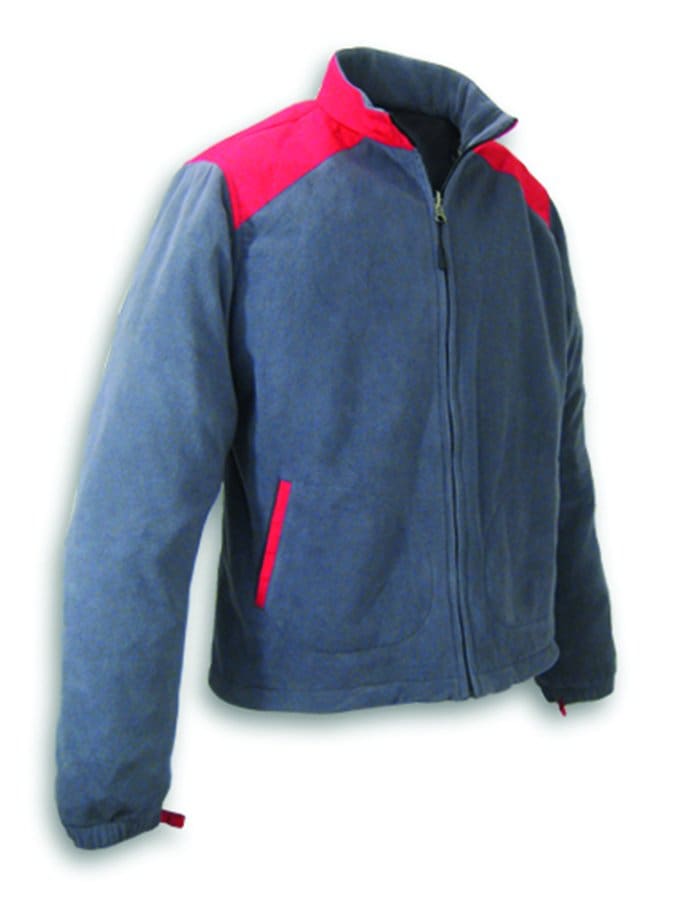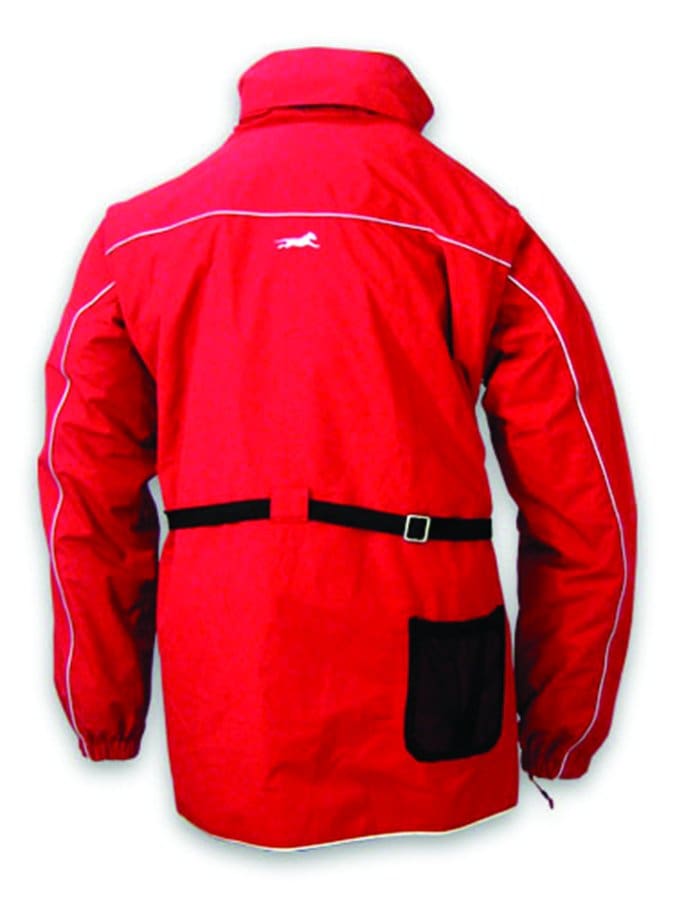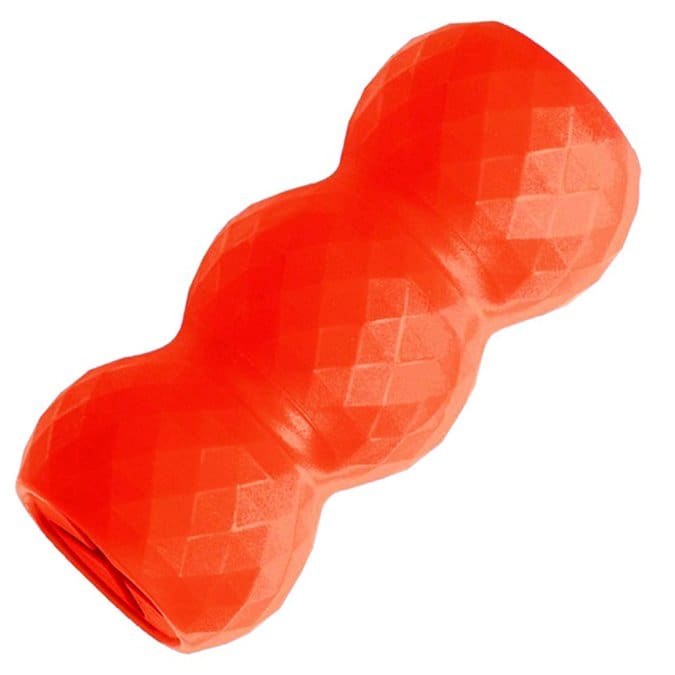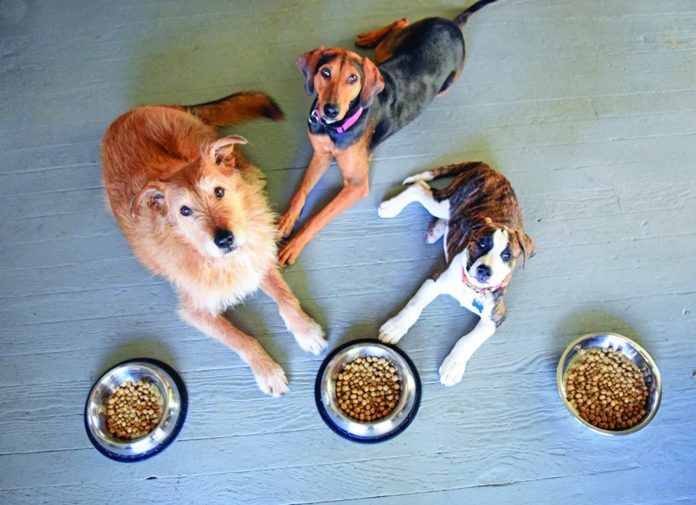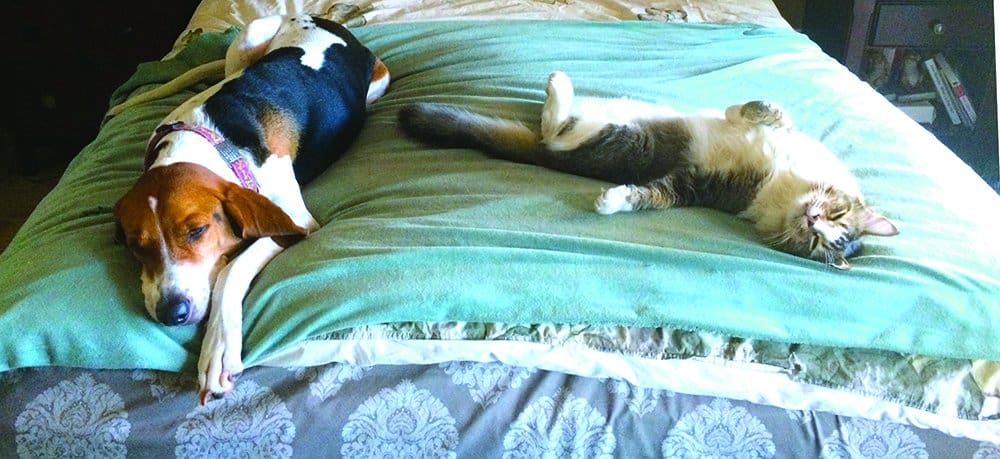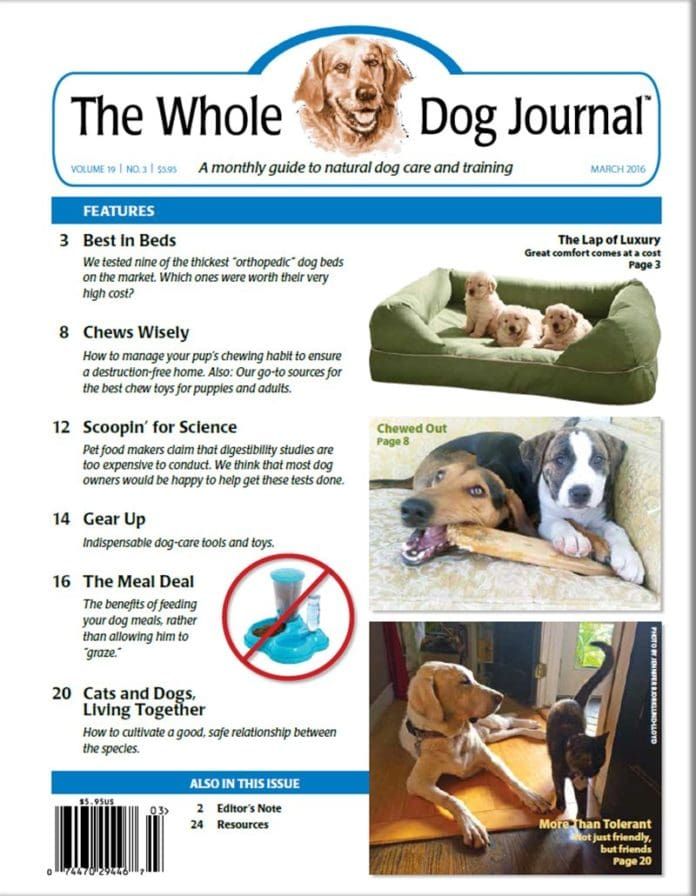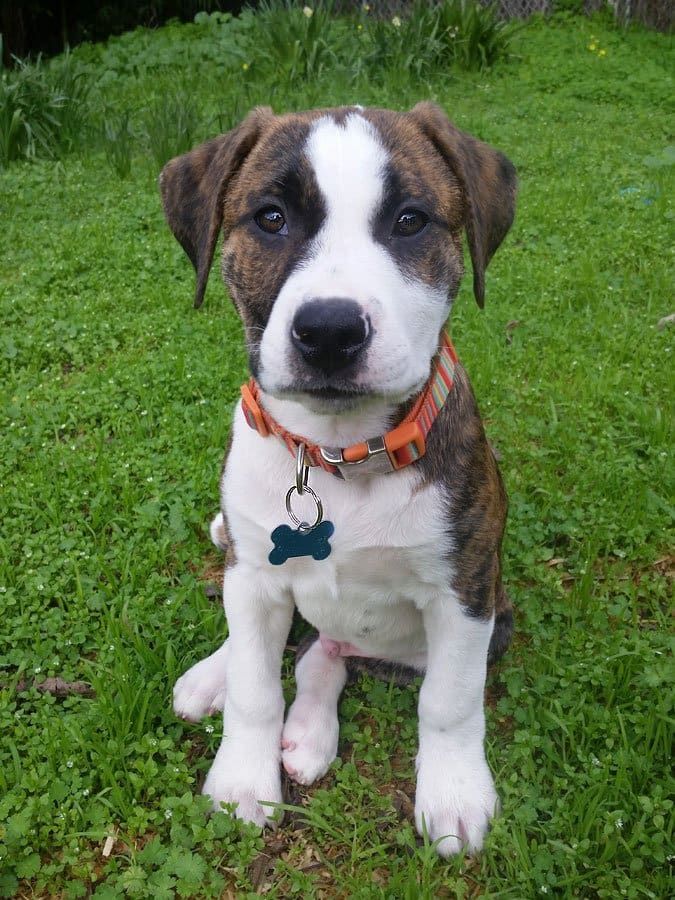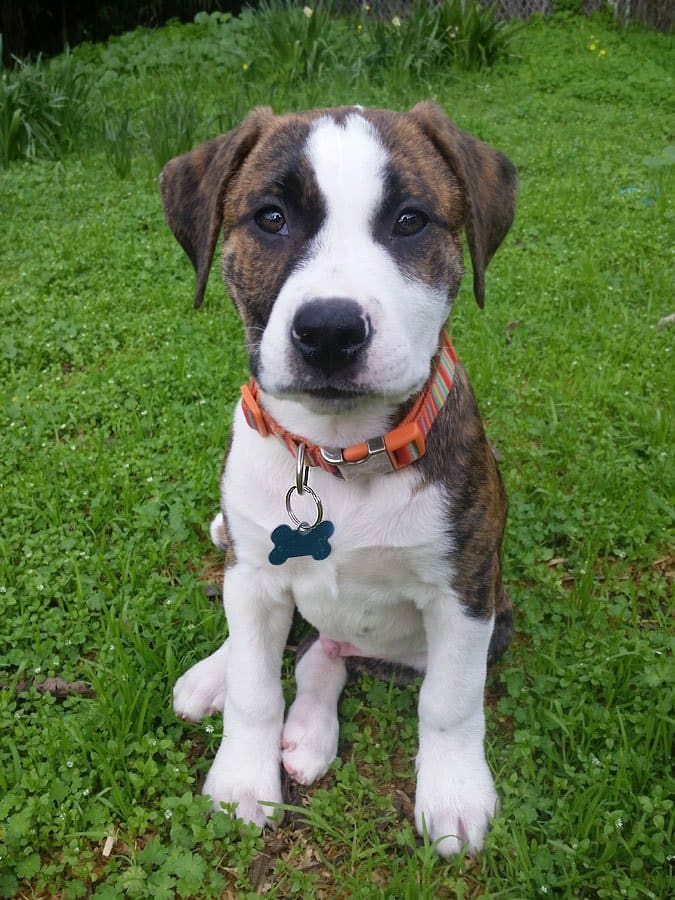If your dog hops out of bed, stretches, and trots off, thank your lucky stars. He’s likely had a good sleep on a supportive surface. But if he rises slowly, stiff and sore, that bed might be worn out or inferior. Even an old dog shouldn’t wake up stiff and sore. The time is now to spring for a good dog bed!
We gathered nine high-end, medium and large dog beds that were marketed as “orthopedic,” offering full body support. We distributed them to appropriately sized test dogs, most of them in homes with more than one dog. We wanted to see what human and canine preferences emerged, and if these beds truly supported our sleeping dogs.
What Constitutes “Orthopedic”?
There is no legal or technical definition of “orthopedic” when it comes to dog beds. Wikipedia defines an orthopedic mattress as one “designed to support the joints, back, and overall body.” We’d say that an orthopedic dog bed is one that reacts to and supports the dog’s weight in a superior fashion. In our opinion, if you squeeze a dog bed and are able to flatten it, feeling the floor or your fingers on the reverse side, that bed isn’t offering orthopedic support, no matter what the label says.
In search of maximum support, we dismissed “filled” beds – those products that are stuffed full of chunks of foam, fiber, or other small particles. Those beds tend to adjust slowly (or not at all) when the dog gets up. They usually become lumpy and indented, requiring you to “fluff” them up on occasion.
Instead, we selected products with the thickest mattresses we could find. A couple of our selections have mattresses made with slabs of quilted poly fiberfill. But most of the “orthopedic” beds are made with super-thick, high-quality foam – those products being best able to evenly distribute a dog’s weight and offer balanced, cushiony, firm support each time the dog gets on the bed.
Details of the beds we chose for evaluation, along with links to company websites, appear below.
Whole Dog Journal‘s Favorite Orthopedic Dog Beds
| BED | TYPE, ORIGIN | DIMENSIONS AND PRICES | COMMENTS |
| Alden Odor’s Posture Pedic Pet Mats (866) 364-6367 dogodor.com |
Flat, rectangular; Made in the USA | Small: 12″ x 17″ $25 Large: 28″ x 46″ $55 (seven more sizes in between) |
These mats are made with two layers of closed-cell memory foam and wrapped with a Cordura cover. Extraordinarily durable and long-lasting. Foam is 2 inches thick. This bed is not soft and cushy, but offers incredible support. This is our top choice for an inexpensive way to provide support for your dog. |
| Drs. Foster & Smith’s Quilted Super Deluxe Dog Bed (800) 381-7179 drsfostersmith.com |
Rectangular; imported | Small: 36″ x 21″ x 7″ $90 Medium: 42″ x 24″ x 7″ $140 Large: 48″ x 28″ x 7″ $160 X-Large: 50″ x 35″ x 7″ $180 |
The mattress in this bed is made with a 6-inch slab of orthopedic foam, covered with quilted poly fiberfill, stitched to stay in place and to offer solid support. The poly/cotton quilted cover has an extra heavy-duty zipper; replacement covers and a waterproof liner are also available. |
| For Your Dogs Only’s Premium Bagel Bed (888) 413-0290 foryourdogsonly.com |
Oval with high sides all around; Made in the USA | Measurements = sleeping area, not entire bed: XXS: 13″ x 21″ $50 XL: 37″ x 46″ $194 (four more sizes in between) |
Very cozy, nest-like bed with 100% cotton durable cover. Can be ordered with either a polyfill or orthopedic foam mattress, or a combination. Order a size larger than you think you need. Excellent, maximum support. |
| In the Company of Dogs’ FurFighter Orthopedic Bolster (800) 544-4595 inthecompanyofdogs.com |
Bolster; Made in the USA | Medium: 36″ long $250 Large: 46″ long $280 |
Arguably the most luxurious bed in the trial. Beautiful. The tightly woven fabric does not allow fur or dirt to penetrate to the foam beneath. NASA-certified memory foam with a poly fiberfill bolster. Provides maximum support. |
| L.L. Bean’s Therapeutic Dog Couch (800) 441-5713 llbean.com |
Bolster; Made in USA with imported components | Small: 25″ x 20″” x 7″” $130 Medium: 36″ x 28″ x 9″ $180 Large: 44″ x 34″ x 12″ $250 X-Lg: 52″ x 42″ x 13½” $290 |
This bed has poly fiberfill bolsters on three sides, and a durable 100% cotton denim cover. The mattress is an open-cell memory foam base insert. Nice details! Gussets ensure that the cover fits snugly, and the zipper is covered to discourage chewing. Assembly required; we struggled with it initially to get it put together. Antimicrobial treatment minimizes odors. One of the most durable choices in our trial with excellent support. |
| Orvis’ s Tempur-Pedic Deep Dish Bed (888) 235-9763 orvis.com |
Bolster; Made in USA with imported components | Small: 35½” x 25½” x 3½” $295 Medium: 40″ x 26½” x 3½” $350 |
The mattress in this tempurpedic dog bed is high-density foam with open-cell technology. Comes with a water-resistant breathable liner. Available covers include plush microfiber, faux shearling, or tweed bed, and replacement covers are sold separately. We ordered the tweed cover, and it is absolutely beautiful and elegant. This bed offered maximum support. |
| Petmate’s Dig & Burrow Orthopedic Bed (877) 738-6283 petmate.com |
Flat, rectangular; Bed made in USA, cover made in China | 36″ x 37″ x 3 $90 | This is the only bed we ordered with an egg-crate foam mattress. The egg-crate foam gives the bed a ripply appearance; its maker says it’s designed to encourage dogs who like to dig and scratch before they lay down, and it definitely attracted that activity. We were concerned that with enough digging and burrowing, the cover would tear, but it survived well. The bed offers good support for lighter-weight dogs, and our medium-sized test dogs loved it, but it would not provide enough support for large or heavy dogs. |
| Pet-O-Bed (800) 738-6233 petobed.com |
Rectangular with a “nest” indent in the center; Made in the USA | Small: 18″ x 18″ x 4½” $30 Large: 35″ x 54″ x 8″ $186 (five more sizes in between) |
The mattress in this bed is a single slab of extremely thick foam that has a scooped-out center forming an indented nest. The water-resistant cover goes on like a fitted mattress sheet, with no zippers, hooks, or loops. As far as orthopedic support, this bed provides absolutely superior, maximum support for even the heaviest dog. However, some of our test dogs prefer sleeping on flatter surfaces and shunned the indented nest. |
Some beds with mattresses that do not contain foam:
| BED | TYPE, ORIGIN | DIMENSIONS AND PRICES | COMMENTS |
| Ruffwear’s Urban Sprawl Bed (888) 783-3932 ruffwear.com |
Flat, rectangular; Made in Vietnam | Medium: 28″ x 35″ x 4″ $150 Large: 36″ x 48″ x 4″ $200 |
This two-sided mattress is made with recycled polyester. One side is firm and meant for warmer temperatures or dogs with orthopedic issues. The other side is softer and provides more warmth. The top of the cover is made of microsuede; the bottom is a waterproof fabric, providing a moisture barrier. Mattress can be washed (separately) in a commercial front-loading washer. This is an extremely durable bed, that provides excellent support. |
| Molly Mutt Bed Covers (510) 524-2900 mollymutt.com |
(Not actually a bed, but a stuffable bed cover); Designed in California and made in China | Small: 22″ x 27″ x 5″ $25 Med/Lg: 27″ x 36″ x 5″ $41 Huge: 36″ x 45″ x 5″ $50 Round: 36″ x 5″ $19 |
We had to tell you about these 100% cotton, durable, well-made dog bed covers. They were designed as an environmentally friendly dog-bed option; the maker suggests that you stuff them with old clothing, blankets, towels – whatever you would like. Given that they are some of the most attractive covers we’ve seen, and inexpensive (especially given the quality of the fabric and the workmanship), we’d consider stuffing them with a slab of high-quality foam from an upholstery shop in order to create our own orthopedic pet bed, or use them as replacement covers for another bed of a compatible size. |
Foam-Filled Dog Beds
When it comes to beds with a foam cushion, thicker is usually better – and a thick mattress is an absolute necessity for a larger, heavier dog – as it offers more support and lasts longer. Some dog beds are made of thinner foam slabs that have been glued together. These tend to be less expensive than the ones made with the thickest, single slabs of foam. We noted several claims that a single piece of foam will last longer and offer more support, but the length of our trial (about six months) was insufficient to prove or disprove this theory.
Most of the beds in our trial were made of high-grade, flat, polyurethane foam. If it’s thick enough, flat foam will support your dog.
Many manufacturers use egg-crate foam for dog beds. It’s a top choice in human health care due to its support, shock absorption, and economical price. Egg-crate foam is usually open-cell foam, which, combined with its egg-crate shape, is meant to offer more air flow and a cooler surface than memory foam or flat orthopedic foam. However, today, any foam (even some memory foams) can be infused with air pockets to allow heat to escape.
Egg-crate foam adjusts to pressure immediately. The downside is that it will not have the longevity of memory foam. It can become permanently compressed with time, which means if you start to see the dog’s imprint in the bed – dents and hollows – it’s time to replace the foam. Only one of our selections is made with egg-crate foam.
Memory foam, invented by NASA in the 1970s, is a polyurethane that molds to shape and becomes more pliable as it becomes warmer, including from body warmth. It provides excellent support in thinner slabs than ordinary foam. Since quality memory foam is evaluated by its density, not its thickness, a good memory foam pad that is just two inches thick can offer excellent support. As your dog lies on memory foam, the surface slowly adjusts to the weight distribution, offering a well-aligned support system. Memory foam dog beds also offer the advantage of being a long-lasting choice.
The downside of memory foam is that it can retain heat more than other foams. That’s because most memory foams are closed foam, which means no airflow (some of the newer memory foams have air pockets). The too-warm problem can be circumvented by placing a thicker cover/pad on top of the mattress, or even adding a “cool bed” on top during warmer temperatures. If your dog constantly gets up, circles and lays back down, or pants for no apparent reason (panting can also indicate pain, of course), or sleeps belly up, he may be too warm.
Easily Washed Beds
For our trial, we considered only those beds that had covers that can be removed for washing. Who wants something in their home that a dog will be spending a significant amount of time on and that can’t be washed? Ick!
Happily, we were able to remove, wash, dry, and replace every bed cover in this trial without major problems. Except for the Pet-O-Bed, which has no zippers or closures, all the covers zipped on and off.
A few of the covers were trickier than others to get back on. It was a lot of work to get everything stuffed into the L.L. Bean dog bed, for example. The Pet-O-Bed required close attention to the instructions, but once they were understood, no problem.
The Urban Sprawl fiberfill mattress is the only one that can be washed in a front-loading machine. The foam mattresses in the other beds can be spot-washed or lightly sprayed with a mixture of vinegar and water to help get rid of any lingering odors.
Sun is a great antimicrobial agent, but be careful. It can also damage foam if it is exposed to intense sun rays for very long.
Observations
The Pet-O-Bed product was the thickest foam dog bed in our trial, up to eight inches in its largest sizes. Their high-quality foam was made in the USA, and this is important. Some inferior imported foams can retain a chemical smell. While the odor will usually dissipate if you thoroughly air out the foam prior to use, we advise you to look for that USA label. A notable exception is the Drs. Foster & Smith bed in this trial. While imported, it proved to be a quality choice.
The FurFighter Orthopedic Bolster bed uses NASA-certified memory foam covered with a tightly woven fabric designed to resist dust and hair from passing through. It’s a luxurious bed, and our tester, a veterinarian, believes it offers maximum orthopedic support.
We read a customer review of the Orvis Tempur-Pedic bed, another memory foam bed that performed very well in our trial. The review was the only one-star review online, so it drew our attention. The reviewer wrote that the bed was too hard and took too long to allow the dog to “sink” in. That gave us pause. Memory foam is naturally stiffer in cool temperatures (the review was written in November, so we assume the ambient temperature was cool).
As for the comment that dog didn’t actually sink into the bed fast enough, well, that’s a good thing. Quality memory foam is actually less springy than other foams. It’s supposed to be slower to relax against weight and slower to recover when that weight is removed. If you press your hand on good memory foam, you will leave a handprint, and then it will gradually disappear. Remember, it’s all about support.
L.L. Bean’s Therapeutic Dog Couch uses open-cell memory foam, which offers relief from overheating. Unfortunately, we were not able to judge if that was true, as our trial took place in the fall and winter. However, the bed is extremely durable, withstanding chewing and standing up to the demands of two large Labrador agility dogs.
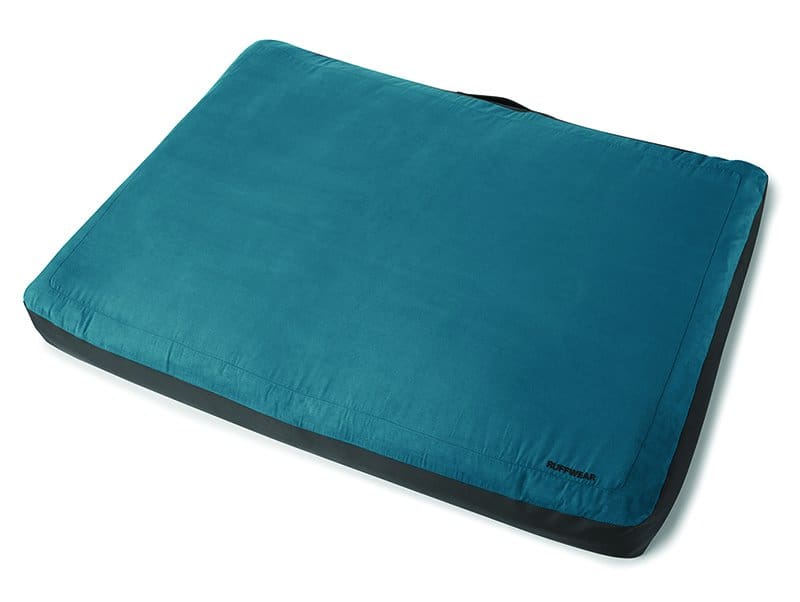
The mattress in Ruffwear’s Urban Sprawl bed is made of recycled polyester fiberfill and is reversible! One side is firm, designed to keep the dog cool in warmer temperatures; the other side is soft, both for dogs with orthopedic issues and those who might benefit from added warmth. This durable bed survived a very large Goldendoodle who has destroyed every other bed he’s had. He only managed to scratch a few holes in it, and the tester said “Doodle” loves his bed.
Consider When Buying for YOUR Dog
Different dogs have different sleeping styles, although nearly every dog will relax in every position at one point or another. Before you purchase an expensive dog bed, observe your dog in his napping position at different times. If he tends to sleep most in a ball and likes to cuddle, he might like a nesting bed, like the Pet-O-Bed or the Bagel Bed. Dogs who like to “hide” while they’re sleeping might enjoy the deep, luxurious Bagel Bed from For Your Dogs Only.
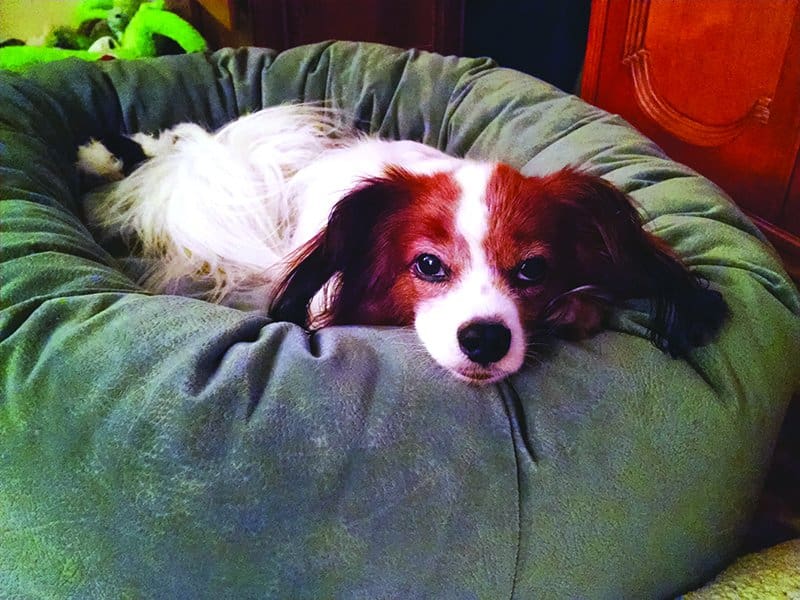
Snugglers might also like a bolster bed, which has at least one raised side, usually the back. Most are raised on three sides. If your dog seems to like to use a pillow for his head or rarely sleeps out in the open, preferring the security of a snuggling up against a nearby pillow or cushion, he might be a bolster bed candidate. A bolster bed can also be a good option for a dog who likes to lie on his side, as long as it’s big enough.
Dogs who flop down and spread out as wide as possible are candidates for a rectangular bed, although we maintain that if you’re not sure, the rectangular bed is your most versatile choice. You can place it against a wall with a couple of pillows against the wall to mimic a bolster bed or add a blanket for the “nesting” dog to scratch around on.
Actually, Petmate’s rectangular Dig & Burrow bed was a favorite in one of our testing spots, with every canine family member using it as often as possible. They scratched on its surface, digging and circling for that “perfect” spot. Unfortunately, however, we had to place it in a home with lighter dogs, as its foam seemed to lack what we considered adequate support for heavier dogs. If your dog likes the “dig and burrow” concept, consider purchasing this bed and placing it on top of Alden Odor’s Posture Pedic pad for more support.
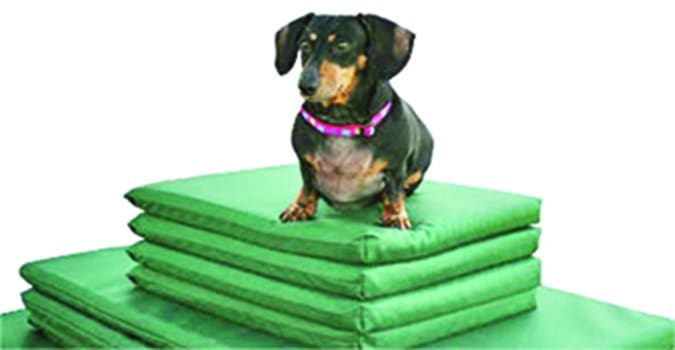
The Pet-O-Bed has an inviting “nest” indent in the center of the bed, but our test dogs didn’t settle into it. The Pet-O-Beds feature the thickest foam of any of the products we tested, which, one would think, should have sparked a lot of interest, but our dogs didn’t stay put for long. We suspect the bed may have been too small for our test dogs. Also, the nest indent might not attract all dogs, making us wish the company produced a flat bed, too.
Size is a big issue. Bigger is better, even for little canines. It’s the rare dog who thinks he’s smaller than he is. One of our test dogs, a medium Goldendoodle, determined that one bed was simply too small for him. Once in a while, he would curl up on it, but mostly he used the bed as a pillow. When we measured the dog and the bed, the bed had a spare five or more inches in each direction for the dog but, apparently, he disagreed.
We recommend you ignore breed and weight suggestions on websites for choosing a bed in the “right” size. Instead, grab a measuring tape and measure your dog from nose to tip of tail, from toe to top of the withers. Then, order a bed that’s at least 12 inches longer and wider than the dog’s measurements. Doing this can be especially helpful when shopping for dog beds for small dogs – “small” could mean a lot of things.
We also advise you to check out the company’s return policy. If it’s a local shop, no problem. If you’re mail-ordering the bed and have to return it, the return shipping cost can be a big chunk of change. Either way, for the first day or two, put a large clean sheet on the bed, covering top, sides and at least some of the bottom. You want to protect it from dust, dirt, dog hair, and any signs of use in order to be able to return it.
Adjusting to a New Bed
One of the biggest problems with a new bed is getting your dog to use it. Dismissing the bed, saying the dog doesn’t like it before he’s even gotten used to it, is a disservice to the bed and the dog.
The most important element is the location of the new bed. If your dog’s old bed is beside the couch, you’re going to have to place the new bed in that spot. If it’s a new item, place the bed in a spot your dog often sleeps or in your bedroom if he comes in with you at night. Always place the bed away from drafts and cold areas. Some dogs prefer their beds tucked into a quiet spot they can call their own, while others like to snooze in the middle of all the household activity.
It may help to “scent” the new bed. You can do this a number of ways, but one of the veterinarians who helped test these beds suggests the dog owner curl up on the new bed and hang out there for 15 minutes or so, to make the bed smell like you and like home. You might also toss a few of your dog’s favorite toys on the bed until he accepts it as his own. It’s all part of introducing the dog to the new bed, helping your dog understand the bed is his to use. He’ll soon figure out it’s comfortable!
Finally, the cover material can make a difference. Many of the beds in our trial come from smaller manufacturers who may be willing to take the cover back in trade for a different texture. Maybe your dog doesn’t like denim, but thinks microsuede is luxurious. It can be challenging to determine why your dog walks away from a comfortable-looking bed.
Bottom Line
The biggest waste of money when it comes to dog beds is being cheap. Dogs are hard on beds. They scratch at the covers, nibble on zippers, and occasionally try to drag their beds to another spot. A dog bed needs to be durable, stain-resistant, and have washable covers. Every bed in our trial met this criteria.
At the start of the trial, we climbed onto each bed ourselves to get a feel for the support offered. There wasn’t a bad one in the bunch. However, we felt the most support in the Pet-O-Bed, In the Company of Dogs’ Fur-Fighter, Orvis’ Tempur-Pedic, L.L. Bean’s Therapeutic Dog Couch, and Dr. Foster & Smith’s Quilted Super Deluxe beds.
If your dog is a chewer, meaning you know the bed has a limited lifespan in your household, an egg-crate foam bed or regular foam bed may be the most economical choice. If you want memory foam, choose a brand that makes replacement covers available or investigate those Molly Mutt covers.
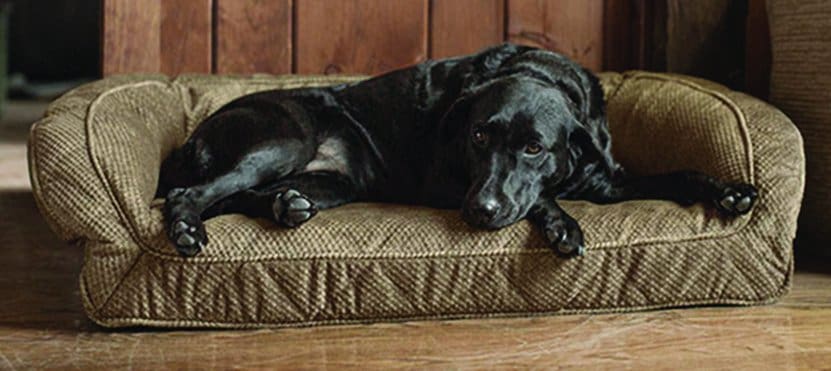
For dogs who are kind to their sleeping quarters or have known severe arthritic/orthopedic issues, memory foam is worth the extra cost. In terms of maximum support, we found memory form offer the highest level, followed by flat foam, then the egg-crate foam.
If you’re not at all sure what type of bed your dog might like, we’d go with a flat, rectangular bed just a bit larger than you think you actually need. Every test dog loved the flat beds. Of the ones we had, the Quilted Super Deluxe dog bed from Drs. Foster & Smith earns top choice. While it looked “boring” to us humans, who ooh’d and ahh’ed over the fancy beds from In the Company of Dogs, Bagel Bed, and Orvis, our test dogs couldn’t have cared less. During the bed-sorting and -distribution stage of the test, I more frequently found my dogs on the Quilted Super Deluxe bed than any other bed. For the actual trial, it was shared in a household of Brittanies, and the older arthritic dog – ruler of the roost – claimed it as her own, choosing it even over her owner’s own mattress.
A close second is the Urban Sprawl, which truly gets points for durability and its waterproof fabric bottom.
The Posture Pedic Pet Mat is a bargain to consider, as it offers a lot of firm support. It’s only about two inches thick, but even big dogs get good support when they’re on it. We saw many of these mats used as “under mats” in crates at dog shows and trials with an added cushier soft top layer. Its price is tough to beat, durability is jaw-dropping, and you could combine it with the very fun Dig & Burrow bed.
Note: We didn’t have a completely round bed in this trial, but be aware that if you choose a round bed it must be large enough that the dog can sleep flat out as well as curled up.
Cynthia Foley is a freelance writer and dog agility competitor from New York. Her Papillons enjoyed their time in the sea of dog beds, before they were sent to larger test dogs.


